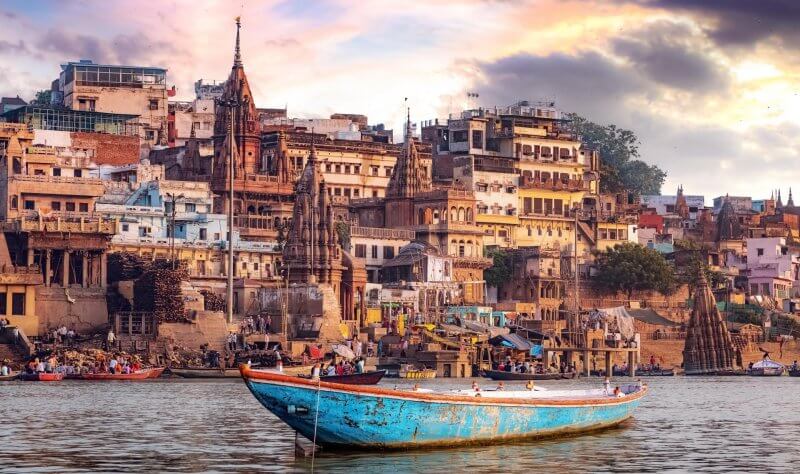Varanasi, India – one of the most mysterious and controversial cities in the country, where many Indians come to die. However, this tradition is not connected with incredibly beautiful nature or good medicine – Hindus believe that the Ganges River will save them from earthly suffering.
General information
Varanasi is one of the largest cities in the north-eastern part of India, known as the center of Brahmin scholarship. Buddhists, Hindus and Jainists consider it a holy place. It means as much to them as Rome to Catholics and Mecca to Muslims.
Varanasi covers an area of 1,550 square kilometers and has a population of just under 1.5 million. It is one of the oldest cities in the world, and most likely the oldest in India. The name of the city comes from two rivers – Varuna and Assi, which flow into the Ganges. Varanasi is also occasionally referred to as Avimuktaka, Brahma Vardha, Sudarshana and Ramya.
Interestingly, Varanasi is one of the most important educational centers in India. So, here is the only university in the country, where education is conducted in the Tibetan language. It is the Central University of Tibetological Studies, founded under Jawaharlal Nehru.
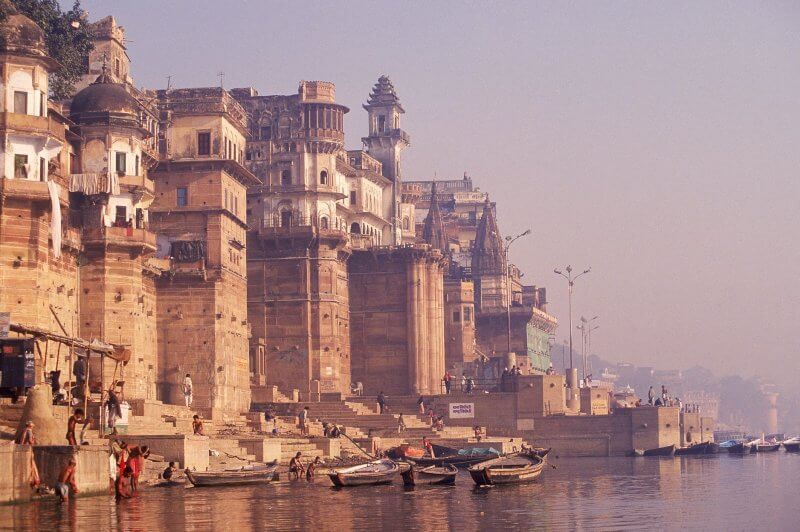
The nearest major cities to Varanasi are Kanpur (370 km), Patna (300 km), Lucknow (290 km). Kolkata is 670 km away, while New Delhi is 820 km from the property. Interestingly, Varanasi is located almost on the border (by Indian standards). The border with Nepal is 410 km away, Bangladesh is 750 km away, and the Tibet Autonomous Region is 910 km away.
Historical background
As Varanasi is one of the oldest cities in the world, its history is very vivid and complex. According to one ancient legend, the god Shiva founded a settlement on the site of the modern city, making it one of the religious centers of Eurasia.
The first accurate information about the settlement dates back to 3000 BC – it is mentioned in several Hindu scriptures as an industrial center. Historians say that silk, cotton, and muslin were grown and processed here. They also made perfumes and sculptures. In the first millennium BC, Varanasi was visited by several travelers who wrote about the city as the ” religious, scientific and artistic center” of the Hindustan peninsula.
In the first third of the 18th century, Varanasi became the capital of the kingdom of Kashi, so that the city began to develop much faster than neighboring settlements. For example, one of the first forts in India and a number of palaces and park complexes were built here.
1857 is considered a tragic year for Varanasi – the Sepoys revolted, and the British, wanting to stop the crowd, slaughtered many local residents. As a result, a significant part of the city’s population died.
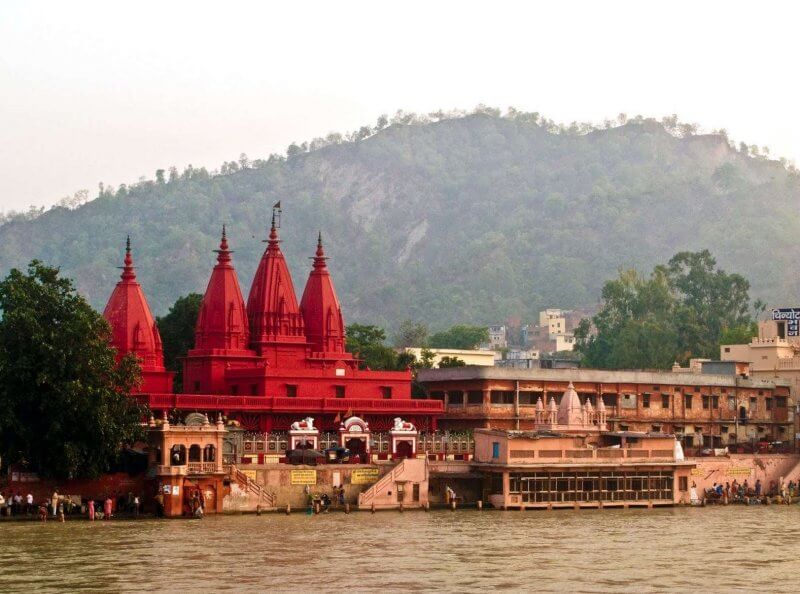
At the end of the 19th century, the city became a place of pilgrimage for hundreds of thousands of believers-they came here from all over Asia to take part in local festivals and visit temples. Many rich people come to Varanasi to die in the “holy land”. This leads to bonfires burning day and night near the Ganges, in which dozens of corpses are burned (this is the tradition).
In the 20th and early 21st centuries, the city is also an important religious center, which attracts believers from all over the country and scientists who want to better study the phenomenon of this place.
Religious life
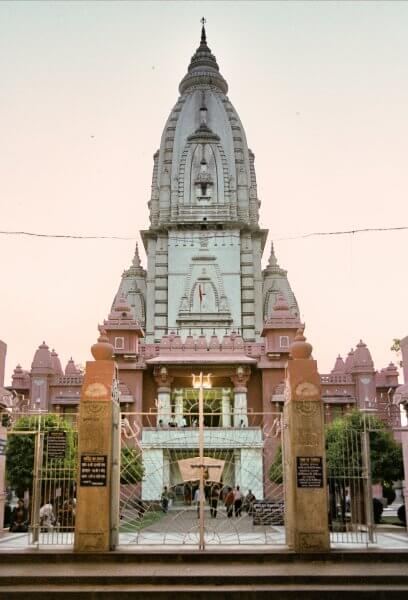
In Hinduism, Varanasi is considered one of the main places of worship of Shiva, because, according to legend, it was he who created the city in 5000 BC. It is also one of the TOP 7 major cities for Buddhists and Jains. However, Varanasi can be safely called the city of four religions, because many Muslims live here.
Among Hindus, the pilgrimage to Varanasi is so popular because the city stands on the banks of the Ganges, a sacred river for them. From the earliest childhood, every Hindu aspires to come here to perform the rite of ablution, and at the end of his life to be burned here. After all, death for a professing Hindu is only one of the stages of rebirth.
Since the number of pilgrims who come here to die is exorbitant, funeral pyres are lit in the city of Varanasi both day and night.
Open-air crematorium
Not everyone can die “correctly” in Varanasi – in order to be burned and allowed to cross the Ganges, you need to pay a tidy sum, and many believers have been collecting money for many years to travel to the next world.
On the territory of the city there are 84 ghats – a kind of crematoria, in which from 200 to 400 bodies are burned per day. Some of them are abandoned, while others have been burning for decades. The most famous and ancient is Manikarnika Ghat, where for several thousand years Hindus have been helped to achieve the state of moksha. The procedure is as follows:

- On the banks of the Ganges, firewood is stacked in neat piles (they are delivered from the opposite bank of the river, and the prices are very high).
- They light a bonfire and put the body of an already deceased person there. This should be done no later than 6-7 hours after death. Usually, the body is wrapped in a white cloth and put on traditional jewelry for the caste to which the person belongs.
- After only one piece of dust remains, it is thrown into the Ganges. Many corpses do not burn completely (if old firewood was used), and their bodies float along the river, which, however, does not bother the locals at all.
Prices in Manikarnika Ghat
As for the cost, 1 kg of firewood for a campfire costs 1 dollar. To burn a corpse requires 400 kg, therefore, the family of the deceased pays in the region of $ 400, which is a huge amount for residents of India. Rich Hindus often make a bonfire with sandalwood – 1 kg costs $ 160.
The most expensive “funeral” was at the local maharaja – his son bought firewood from sandalwood, and during the burning threw topaz and sapphires over the fire, which later went to the crematorium workers.
As cleaners of corpses are people belonging to the lower class. They clean the crematorium grounds and pass the ashes through a sieve. It may seem strange, but their main task is not cleaning at all – they must find precious stones and jewelry that relatives of the deceased cannot remove from the dead themselves. After that, all valuables are put up for sale.
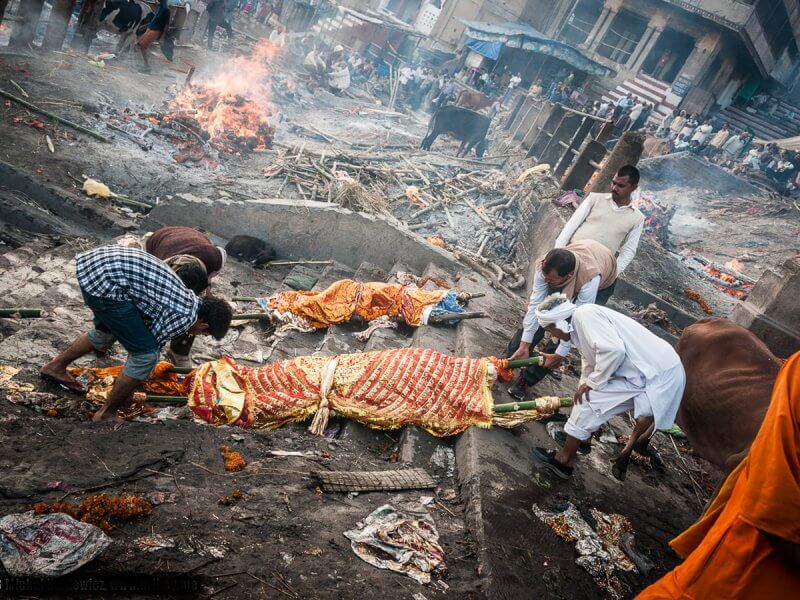
It is important for tourists to know that you will not be able to photograph bonfires for free – “believers” will immediately run up to you and say that this is a sacred place. However, if you pay the money, you can do it without any problems. The only question is the price. So, crematorium employees always ask who you are, who you work for, etc. This will determine the price that they will ask for.
To save money, it is best to introduce yourself as a student – for a week of shooting, you will need to pay about $ 200. After payment, you will be given a piece of paper, which you will need to show if necessary. The highest prices are set for journalists – one shooting day can cost more than $ 2,000.
Types of crematoria
In Hinduism, as in Christianity, it is customary to bury suicides and people who have died of natural causes separately. In Varanasi, there is even a special crematorium for those who have passed away of their own free will.
In addition to the “elite” crematoriums, there is an electric crematorium in the city, where they burn those who have not managed to save enough money. It is also not uncommon for a person from a poor family to collect the remains of firewood from already burned fires all along the coast. The corpses of such people are not completely burned, and their skeletons are lowered into the Ganges.
For such cases, there are body cleaners. They take a boat down the river and collect the bodies of those they didn’t burn. These can be children (you can’t burn them before the age of 13), pregnant women, and people with leprosy.
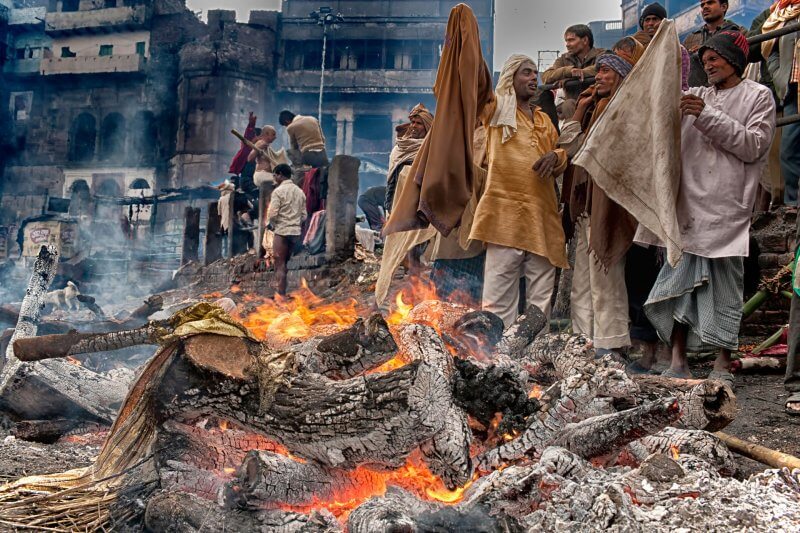
Interestingly, people who were bitten by a cobra are also not burned – the locals believe that they do not die, but are only temporarily in a coma. Such bodies are placed in large wooden boats and sent to ” meditate”. Signs with the address of their residence and name are attached to the corpses of people, because when they wake up, they can forget about their past life.
All of the above traditions are quite specific, and a number of Indian politicians agree that it is time to stop such rituals. It is hard to believe, but only 50 years ago in India it was officially forbidden to burn widows-previously, the wife who burned alive had to go to the bonfire with the deceased husband.
However, both locals and tourists have great doubts about the fact that such rituals will be canceled – neither the arrival of Muslims nor the appearance of the British on the peninsula could change the millennial traditions.
What does the city look like outside the “crematorium zone”?
The opposite bank of the Ganges is an ordinary village where ordinary Indians live. In the waters of the sacred river, they wash clothes, cook food, and are very fond of swimming (tourists, of course, should not do this). Their whole life is connected with water.

The modern part of the city of Varanasi in India is an abundance of narrow streets (they are called gali) and colorful houses. There are many bazaars and shops in the residential areas. It is amazing, but here, unlike Mumbai or Calcutta, there are not so many slums and dirt. The population density here is also lower.
One of the most popular Buddhist destinations in Varanasi is Sarnath. This is a huge tree, on the site of which, according to legend, the Buddha preached.
Interestingly, almost all the blocks and streets of Varanasi are named after famous religious figures, or depending on the communities that live there.
Varanasi is a city of temples, so you will find dozens of Hindu, Muslim and Jain shrines here. Worth a visit:
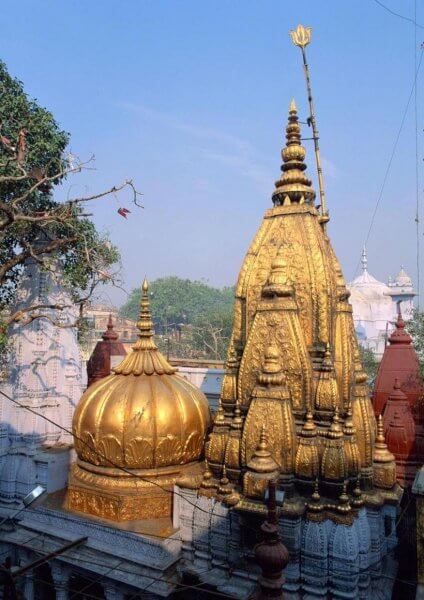
- Kashi Vishwanath or Golden Temple. It is built in honor of the god Shiva, and is considered the most important in the city. It looks similar to kovilas in other major cities of India. It is important to note that this is the most protected temple in India, and you can not enter it without a passport.
- Annapurna Temple dedicated to the goddess of the same name. According to legend, a person who visited this place will always be full.
- Durgakund or monkey temple. It stands out vividly from the other attractions of Varanasi in India, because it has bright red walls.
- Alamgir Masjid is the main mosque of the city.
- The Dhamek Stupa is the main Buddhist shrine of the city, built on the site of the Buddha’s sermon.
Accommodation
Varanasi has quite a large selection of accommodation – only about 400 hotels, hostels and guesthouses. In fact, the city is divided into 4 main districts:
- The area near the crematoria overlooking the Ganges River. Oddly enough, but it is this part of the city that is most in demand among tourists. From here you can enjoy a beautiful view of the river, but, for obvious reasons, it costs a very specific smell, and if you look down, the picture from the windows is not the most rosy. The prices here are the highest, and if you don’t want to watch people pass away day and night, it’s best not to stop here.
- The “rural” part of the city on the opposite bank of the Ganges. There are literally several hotels here, but many tourists warn that this part of Varanasi can be potentially dangerous for tourists – not all locals treat foreigners well.
- Gali or the area of narrow streets is the most suitable place for those who want to feel the atmosphere of the city, but do not want to watch the corpse bonfires. Most of the attractions are located nearby, which makes this area the most attractive for tourists. The disadvantages include a huge number of people and a large number of dark alleys.
- The modern part of Varanasi is the safest. The most expensive hotels are located here, and large office centers are located nearby. Prices are above average.
A 3* hotel for two people per night in Vysokiy will cost 30-50 dollars. It is important to note that the rooms in most hotels are decent, and there is everything you need for a comfortable stay: spacious rooms, air conditioning, private bathroom and all the necessary appliances in the room. There are also cafes near most hotels.
As for guesthouses, their prices are much lower. So, a night for two in high season will cost $ 21-28. As a rule, the rooms here are smaller in size than in hotels. There is also no separate bathroom or kitchen.
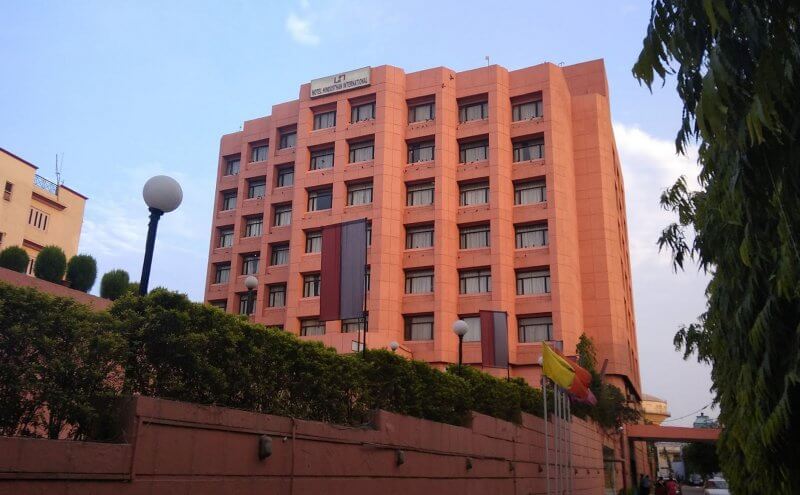
Please note that Varanasi is a very popular destination and hotel rooms should be booked 2-3 months in advance.
How to get there from Delhi
Delhi and Varanasi are separated by 820 km, which can be covered by the following modes of transport.
Plane
This is the most comfortable option, and many tourists advise giving preference to it, because in the Indian heat, not everyone can travel 10-11 hours in a regular bus or train.
Take the metro to reach Indira Gandhi International Airport Station. Then take a plane to Varanasi. The journey time is 1 hour and 20 minutes. The average ticket price is 28-32 euros (depending on the season and flight time).

Several airlines fly to this destination at once: IndiGo, SpiceJet, Air India and Vistara. Their ticket prices are about the same, so it makes sense to go to the official websites of all airlines.
Train
Take train No. 12562 at New Delhi station to reach Varanasi Jn stop. The journey time is 12 hours, and the cost is only 5-6 euros. Trains run 2-3 times a day.
However, it should be borne in mind that buying a train ticket is quite difficult, since they are bought up by local residents immediately after appearing at the ticket office. You can’t make a purchase online. It is also worth knowing that trains are often very late or do not arrive at all, so this is not the most reliable mode of transport for tourists.
Bus
You must land at the New Delhi Bus Terminal and drive to Lucknow station (RedBus carrier). There, you will change to a bus going to Varanasi and get off at the Varanasi stop (carrier-UPSRTC). Travel time – 10 hours + 7 hours. The price is about 20 euros for two tickets. Buses run 2 times a day.
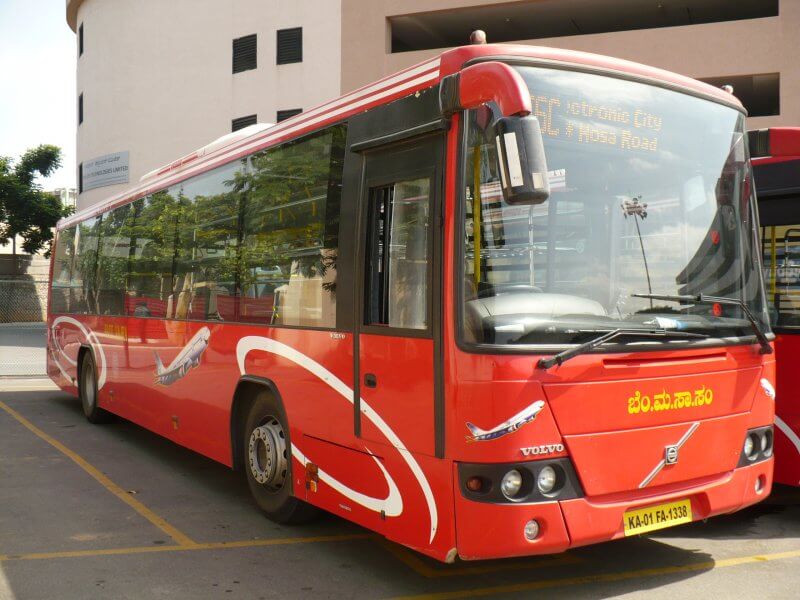
You can book a ticket and follow schedule changes on the official website of RedBus: www.redbus.in
Interesting facts

- Hindus believe that if they die in the sacred city of Varanasi, they will attain the state of moksha – the higher powers will save them from suffering and free them from the endless cycle of life and death.
- If you want to take beautiful photos of the city of Varanasi, go to the embankment at 5-6 in the morning – at this time of day, the smoke from the bonfires is not so strong, and a light haze against the background of the rising sun looks incredibly beautiful.
- Varanasi is known as the birthplace of “Benares silk” – it is one of the most expensive fabrics found only in India. It is usually used to make sarees that can cost hundreds of dollars.
- Varanasi has a humid subtropical climate, and it is hot at any time of the year. The most suitable months to visit the city are December and February. At this time, the temperature does not rise above 21-22 °C.
- It’s not just Hindus who come to Varanasi to die – Americans and Europeans are frequent visitors.
- Varanasi is the birthplace of Patanjali – the man who developed Indian grammar and created Ayurveda.
Varanasi, India-one of the most unusual cities in the world, the likes of which can hardly be found anywhere.

